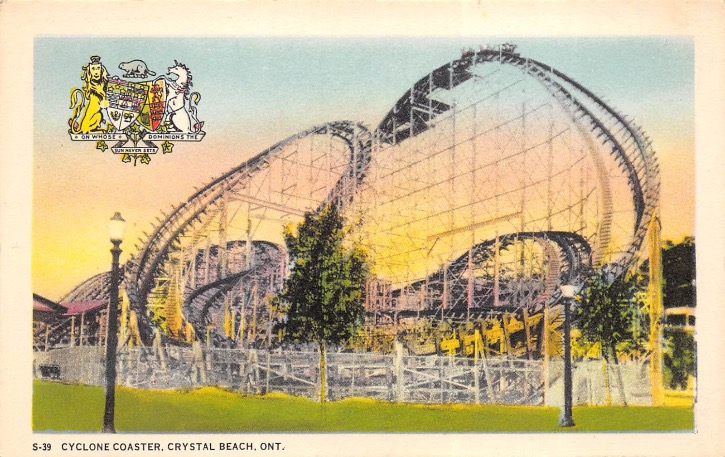Roller Coaster Designers and Innovators
Welcome back to ImagiNERDing.com, your portal to the fascinating world of theme parks and amusement parks! Today, we delve into the history of roller coasters, highlighting the major roller coaster designers, developers, creators, and their significant contributions to safety, technology, and design. From the pioneers of the 19th century to today’s leaders in roller coaster innovation, let’s embark on this thrilling ride!
The Early Pioneers
The story of roller coasters usually begins with LaMarcus Adna Thompson, often referred to as the “father of the roller coaster” due to one of the first books ever written on the history of roller coasters. In 1884, Thompson patented the design for the Switchback Railway, the first roller coaster in America. This ride, located at Coney Island in Brooklyn, New York, was a massive success and set the stage for the roller coaster boom that followed.
But, new research has come to light!
While researchers were convinced that [John G.] Taylor’s switchback railway was never built, a photograph of it was published in Bennett W. Dorman’s “Savin Rock, An Illustrated History” (1998). A sign identified the ride as Taylor’s Patented Incline Railway, July 2, 1872, the date Taylor’s patent was issued. This doesn’t necessarily mean that the photo was from 1872. But thanks to companies digitizing various newspapers on the Internet, Victor Canfield discovered a newspaper article from the Middletown, Connecticut Daily Constitution dated August 15, 1874. It mentions several rides and attractions at West Haven’s Savin Rock including Taylor’s patented elevated railway cars. It reported that “the elevated railway carried over it last year 250,000 persons without the least accident to any one. It is absolutely safe.” This means that Taylor’s scenic railway definitely operated in 1873. Since it was obviously a popular ride, it must have operated for several additional years. https://www.westland.net/venicehistory/articles/EarlyRollerCoasters-1870-1886.htm
Another key roller coaster designer from this era is Phillip Hinkle. In 1885, Hinkle introduced the concept of a complete circuit track with a lift hill mechanism, which allowed the car to be mechanically hauled to the top of the first hill, a feature still used in today’s roller coasters.

The Golden Age Maestros of Roller Coaster Designers
The 1920s saw a surge in roller coaster popularity, and one standout designer of this era was Harry Traver. Known for his extreme designs, Traver’s most notorious creation was perhaps the Crystal Beach Cyclone in Ontario, Canada. With its intense drops and tight turns, it was reputed to be one of the most terrifying roller coasters of its time. It is reported that Crystal Beach kept a nurse on duty armed with smelling salts, although it’s likely the nurse was there to reduce insurance costs.

The Steel Revolutionaries
The mid-20th century marked a significant shift from wood to steel in roller coaster construction. At the forefront of this revolution was Arrow Development, led by engineers Ed Morgan and Karl Bacon. They pioneered tubular steel tracks, enabling smoother rides and more complex twists and turns. The Matterhorn Bobsleds at Disneyland, opened in 1959, was the first roller coaster to use this groundbreaking technology.

The Loopmasters
In the 1970s, Anton Schwarzkopf and Werner Stengel made a significant contribution to roller coaster design by reintroducing loops into roller coasters. The teardrop-shaped loop design of their Revolution ride at Six Flags Magic Mountain significantly reduced the extreme G-forces experienced in earlier loop designs, making the ride safer and more comfortable.

Modern Innovators
The past few decades have seen several record-breaking roller coasters come to life. Ron Toomer of Arrow Dynamics and the Swiss firm Bolliger & Mabillard (B&M) have been instrumental in pushing the boundaries of speed, height, and thrill factor. B&M, in particular, is known for its innovative designs and high safety standards, including the introduction of the four-abreast seating and the inverted roller coaster design.

Another notable modern innovator is Alan Schilke of Rocky Mountain Construction. His company’s patented IBox Track technology has allowed for the renovation of older wooden roller coasters, turning them into hybrid wood-steel coasters capable of inversions and steeper drops.

Safety First for Roller Coasters Designers
Safety has always been paramount to roller coaster designers. Over the years, advancements in technology have significantly improved the safety of these thrilling rides. From the introduction of underfriction wheels (or ‘upstop wheels’) by John Miller in the 1920s, which keep the roller coaster cars securely on the track, to the computer-controlled braking systems used in today’s roller coasters, every innovation has aimed at making rides safer without compromising on the thrill factor.

Roller coasters have come a long way since their inception, thanks to the vision and ingenuity of these creators and developers. As technology continues to evolve, we can look forward to even more exciting and safe roller coaster experiences in the future.
Thank you for joining us on this journey through the history of roller coaster development. Be sure to check back for more exciting insights into the world of theme parks and attractions, only on Imaginerding.com!



